VR gloves are a huge leap forward in immersive technologies. By donning the gloves, you can actually feel and even work with virtual reality in a way that more closely emulates physicality. Virtual reality gloves provide a level of tactile feedback that makes you feel part of the digital world in a way you’ve never experienced before.
In this article, you’ll learn all about the technology behind these innovative peripherals and how they’re being used in the world. You’ll also learn about the most popular gloves and how to choose between them.
Table of Contents:
- What are VR Gloves and How Do They Work?
- How VR Gloves are Revolutionizing Virtual Reality Experiences
- Essential Factors to Consider When Purchasing VR Gloves
- 10 Leading VR Gloves in 2025
- 5 Revolutionary Applications of VR Gloves in Different Industries
- Future Innovations and Trends in Virtual Reality Glove Technology
- VR Headsets; Your Complete Guide to the Top Virtual Reality Gear
- Virtual Reality in Entertainment; Examples of VR in Entertainment
What are VR Gloves and How Do They Work?
VR gloves are wearable computing peripherals that tell your VR device about the movement and position of your hands and fingers. This also includes tracking any gestures you make with your hands. Virtual reality wearable gloves let you manipulate virtual environments with your hands. However, it’s not a one-way system. Some implementations can also send back the feeling of touching things thanks to haptic feedback. Different gloves handle all these elements differently. For example, a glove’s haptic feedback might incorporate pressure points, force feedback, or vibrotactile elements. The more advanced models might leverage optical tracking markers, IMU sensors, and flex sensors for even more precise hand tracking. Combining various methods for tracking and feedback can create the feeling of truly touching objects within VR.
How VR Gloves are Revolutionizing Virtual Reality Experiences
People typically work within VR through handheld controllers. Using controllers is effective and intuitive, but it’s still not as naturally immersive as simply reaching out to touch something. Virtual reality gloves are changing the nature of VR by offering a more immersive experience. You’re not thinking about how to move a device around to manipulate digital objects. You’re simply reaching out to do so. Likewise, haptic VR gloves add the sensory feedback that’s a normal part of manipulating objects in the physical world. There’s resistance when you, for example, squeeze a soft object in the real world. And if you touch something rough, you’ll feel the texture. Haptic gloves add that to VR, and this makes it a more immersive experience.
Video: Goodbye Controllers? VR Gloves are Back!
Essential Factors to Consider When Purchasing VR Gloves
When you think about which virtual reality gloves are the best fit, you should consider the following elements:
- Hardware Compatibility: Make sure that the virtual reality gloves you’re interested in are fully compatible with both your headset and apps.
- Tracking Accuracy Requirements: Consider whether you need the most precise finger-tracking next-gen VR gloves or if hand position tracking would suffice.
- Haptic Feedback Type: Virtual reality haptic gloves leverage different forms of feedback, such as basic feedback with vibration motors, to achieve the most realistic experiences using the resistance of force feedback systems.
- Wired vs. Wireless Operation: Wireless virtual reality gloves remove cords and provide freedom of movement but require charging, while wired gloves don’t need charging but might restrict movement.
- Budget Considerations: Consider your budget and needs, as standard consumer-level VR gloves cost around $300, while professional options are in the thousands.
- Support and Software: Think about the developer community for the virtual reality gloves, along with integrations and SDK availability.
10 Leading VR Gloves in 2025
Demand for virtual reality gloves has been steadily increasing, which is also allowing for impressive new features. The following are 2025’s leading VR gloves and the qualities that make them stand out.
HaptX Gloves
Haptic feedback is a big part of why VR gloves make digital environments so immersive. HaptX puts an even stronger emphasis on that concept through special microfluidic actuators. HaptX users feel like they’re really interacting with physical environments thanks to the glove’s 130+ feedback points for each hand. Likewise, realism is furthered through physical skin displacement of up to 2mm. This displacement provides an accurate simulation of what it feels like to touch something in the physical world. The gloves are expensive, starting out at $12,000, but they’re also the top-tier for overall performance. They’re used for surgical training, engineering prototyping, and similar high-priority usage scenarios.
Video: HaptX Gloves G1 – the Most Realistic Haptic Glove
SenseGlove Nova
SenseGlove Nova VR motion gloves are wireless and excel in applications where users would benefit from realistic simulations of physical resistance. These virtual reality gloves can provide an experience of 2kg of resistance pressure on any finger. In doing so, the gloves leverage a force feedback system where pressure resistance simulates the feeling of touching physical objects. The immersion is furthered through a lightweight design with less than 300g per hand. A manufacturing study performed in 2024 showed that these gloves sped up the completion of real-world tasks by 34% while reducing errors by 28%.
Video: SenseGlove Nova
Manus Prime II
Manus Prime II is an excellent option for work that requires extreme accuracy in finger tracking. These virtual reality motion-tracking gloves are often used for animation and motion capture. Eleven sensors monitor each hand at sub-millimeter accuracy and transmit data with almost no latency – under 5ms. Precision is further fine-tuned through the use of a dual IMU system that compensates for drift. The gloves also support major platforms like SteamVR and OptiTrack. Many of the major studios have seen reductions in hand animation times of 40% to 60% by using them.
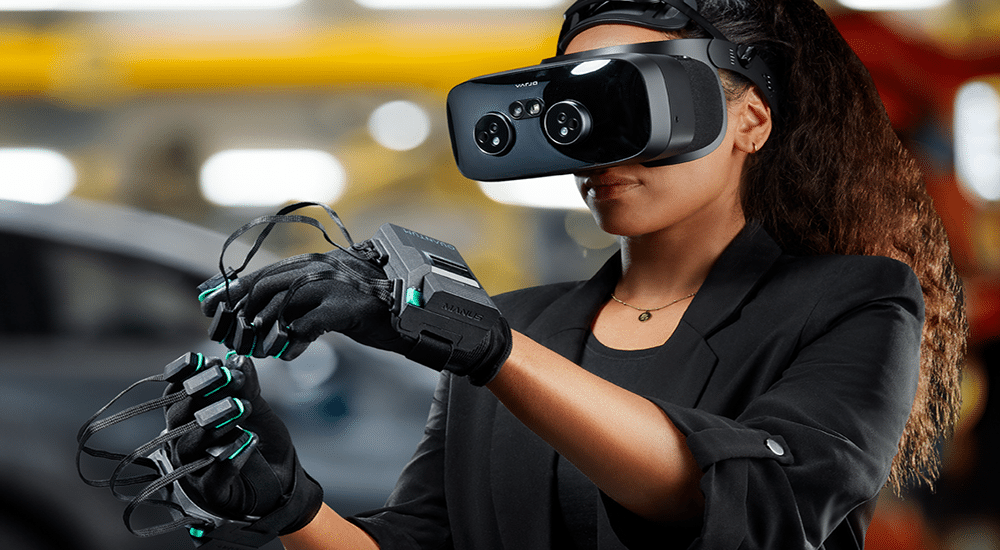
Image attribution: Manus
Manus Prime Mocap Metagloves
The Manus Prime Mocap Metagloves use low-latency wireless connections to balance freedom of movement, real-time performance, and reduced potential for motion capture errors. The finger tracking in these wireless VR gloves makes them ideal for fields that require careful attention, like film production, game design, and animation. The VR gloves are compatible with most of the major motion capture and VR-related software ecosystems. This high level of compatibility ensures that the gloves are easy to add to existing workflows. Professional-grade hand tracking pushes it far beyond what standard VR hand controllers are capable of.
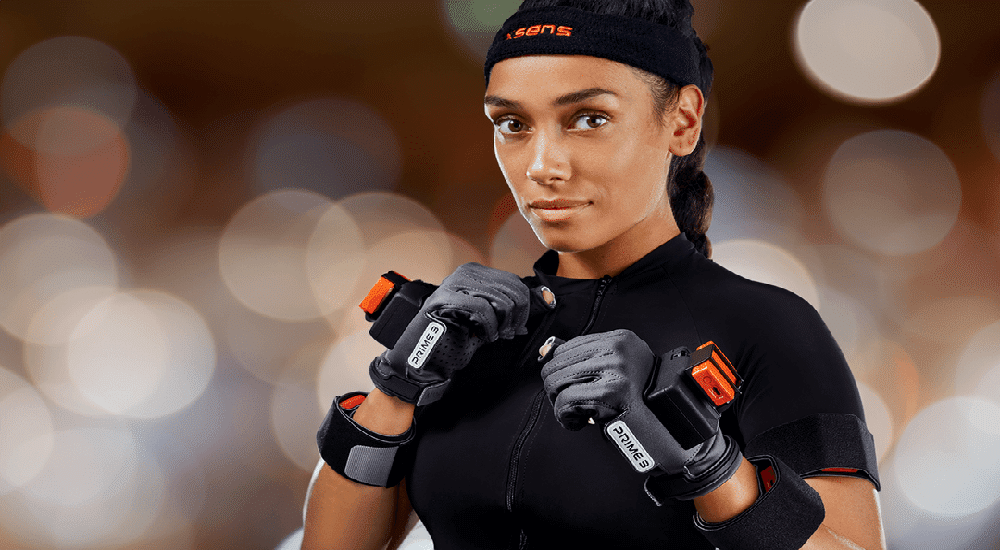
Image attribution: Manus
Noitom Hi5 VR Gloves
Noitom Hi5 VR Gloves are among the best moderately priced options for gamers. These VR gloves provide wireless operation, SteamVR support, and a six-hour battery life. Additionally, the gloves leverage nine IMU sensors on each hand for tracking. The lower cost comes with a lack of true force feedback as the system instead uses vibration-based haptics. However, at less than $1,000, these gloves make a perfect entry point for gamers.
Video: Noitom Motion Tracking – Hi5 VR Glove
bHaptics TactGlove
The bHaptics TactGlove provides a fantastic entry point for general-purpose VR. The gloves have an affordable price point of under $299. However, despite the lower cost, these virtual reality gloves provide some impressive specs. The TactGlove uses ten haptic actuators on each hand, with associated vibrotactile feedback. It’s an impressive display of haptics for the price, and this functionality is taken even further when using the companion app. This software provides options for tailored performance on an app-by-app basis among 350 supported VR programs. The gloves are compatible with most of the major VR systems, including PlayStation VR, Meta Quest, and SteamVR.
Video: Introducing bHaptics Tactglove
BeBop Forte Data Gloves
BeBop Forte Data Gloves combine high-performance sensors with durable comfort. These elements make it an ideal choice for people who need solid performance over extended work sessions. These VR gloves also use special smart fabric sensors to provide even more detailed hand movement metrics. The real-time data stream makes it an ideal option for robotics, industry, VR training, research, and other fields that require higher levels of accuracy and realism. BeBop Forte Data Gloves also boasts tight integration with many VR training programs.
Video: BeBop Forte Data Gloves
Teslasuit Glove
The Teslasuit Glove provides users with high-quality motion tracking, full haptic feedback, specialized touch mimicry, and biometric data collection. The virtual reality gloves provide an extra level of immersion thanks to their use of electrostimulation to mimic the sensation of physical touch. These factors make it an ideal match for rehabilitation, training in a variety of industries, enterprise applications, and gaming. However, one of its most important points is full compatibility with the larger Teslasuit ecosystem.

Image attribution: Teslasuit
VR Haptic Gloves
VR Haptic Gloves are the larger category of VR gloves that offer support for some form of simulated touch. The physical sensation of touch can be recreated by one or more different mechanisms within a single pair of gloves. However, it’s typically accomplished through force feedback and vibration motors. This is sometimes further enhanced with additional sensory effects like texture feedback and temperature simulation. These factors combine to create a more immersive experience where you can intuitively work through systems using your sense of touch. Being able to feel objects and surfaces makes haptic gloves a solid match for industries and workflows that require precision. This includes medical simulations and professional training. However, it’s also a significant feature for gaming VR gloves.
Video: VR Haptic Gloves for Oculus Meta Quest 2 are HERE!
Meta’s Reskin Haptic Gloves Project
Meta’s Reskin Haptic Gloves refers to the range of concepts and research on virtual reality gloves from Meta. It’s a cutting-edge category that incorporates some of the newest and most powerful technologies. The gloves are made with a soft material that reduces any chance of distraction during use. However, the comfortable fit also provides powerful sensors and systems to replicate the sense of touch. AI and machine learning are used within the gloves to better adapt to varying needs for pressure and texture. All of this comes together in a package that is revolutionizing how people look at VR. It’s a new level of realism for touch within virtual environments. The technology and research are still ongoing, but it’s expected that the gloves will be a good match for everything from professional applications to gaming.
Video: These Haptic Gloves for Meta Quest 3 Let You Feel VR!
5 Revolutionary Applications of VR Gloves in Different Industries
Virtual reality gloves provide a new level of immersion that offers vast potential in many different fields. The following are among the most exciting.
Medical Training and Surgery Simulation
VR is a tremendous asset to medical education. With virtual reality gloves, both surgeons and students can practice difficult procedures without any associated risk. It’s a process where medical professionals can build up muscle memory to ensure they can move on instinct when the need arises. Virtual reality feedback gloves create the most realistic simulations for medical education. The Mayo Clinic has even incorporated VR with gloves in its surgical training. A 2024 study showed that residents who leaned with the gloves showed 42% fewer errors during the first ten procedures they performed. If you want to learn more about VR applications in the healthcare industry, read “Virtual Reality in Healthcare; Clear Examples of VR in Healthcare.”
Military and Law Enforcement Training
VR tracking gloves fit into a number of situations that would be dangerous to simulate in the physical world. Tactical practice for law enforcement and military applications is a good example of VR’s utility. Virtual reality gloves let trainees work with weapons, threat assessment, and equipment operation while using realistic tactile feedback and immersive hand gestures. In fact, the U.S. Army has a full Synthetic Training Environment where people can train within full simulations of the battlefield. This VR-powered education has been shown to improve performance on stress tests by 28% and retention of new procedures by 37%.
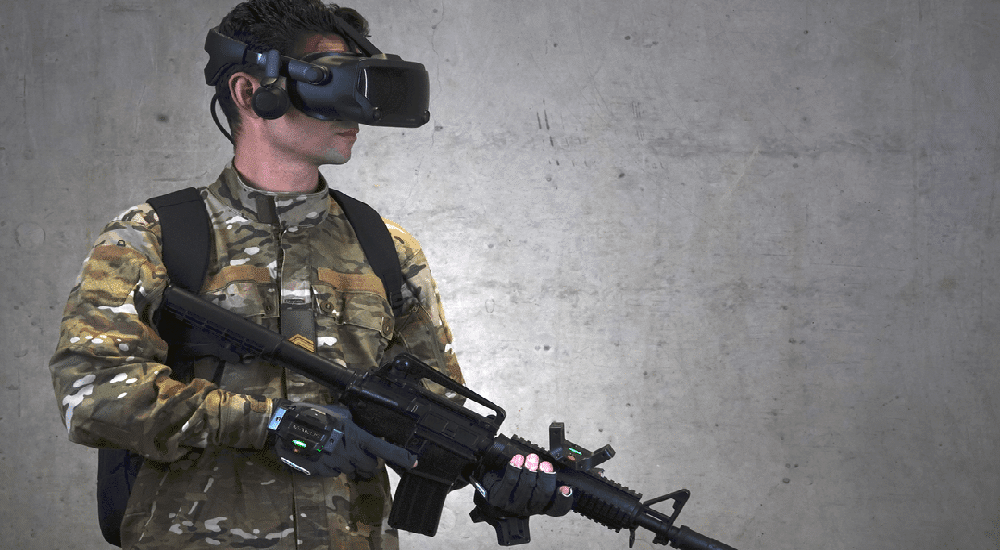
Image attribution: Manus
Engineering and Product Design
Virtual reality controller gloves are the perfect addition to an engineer’s toolkit. When you’re wearing virtual reality gloves, you can quickly and intuitively manipulate 3D objects with your hands rather than with a mouse. This bridges the normally distinct areas of concept and design within an engineer’s workflow. You can essentially move parts around in a design with your hands as if it were a physical mockup. It’s such an effective concept that Boeing has integrated it into their aircraft design process. Implementations of this technique have resulted in decreased need for expensive late-stage changes by 41% and duration of iteration times by 63%.
Virtual Reality Gaming and Entertainment
Gaming virtual reality gloves are an incredibly popular element of the peripheral’s larger market. After all, video games have always strived for immersion. Virtual reality gloves let players quite literally touch the digital worlds they’re playing within. You can feel feedback through the gloves, manipulate puzzles or objects in the game, and even cast spells with hand gestures. The gloves provide such a boost to immersion that the Virtual Reality Gaming Association reports that the use of the peripheral increases satisfaction ratings by 38% and play session duration by 42%. Games like “Half-Life: Alyx” have been showing the full potential of immersive VR gaming. Even theme parks as large as Disneyland are implementing virtual reality gaming gloves in their attractions. If you want to find more information about VR gaming, read “Virtual Reality in the Gaming Industry; Biggest Players & Use Case Examples.”
Rehabilitation and Physical Therapy
VR sensory gloves are also highly effective tools for physical therapy. A study in 2023 showed stroke patients averaged 34% greater recovery in hand function if they used VR gloves. Further data from rehabilitation clinics and centers showed 76% higher therapeutic repetitions in patients using the devices. Likewise, patients reported that they needed to put in only 40% of the effort when using the gloves. The University of Southern California, in particular, has seen success in the use of these devices for stroke rehabilitation, in part because of their instant feedback. Therapists also benefit from the ease with which they can adjust the glove’s resistance levels to match the needs of recovering patients.
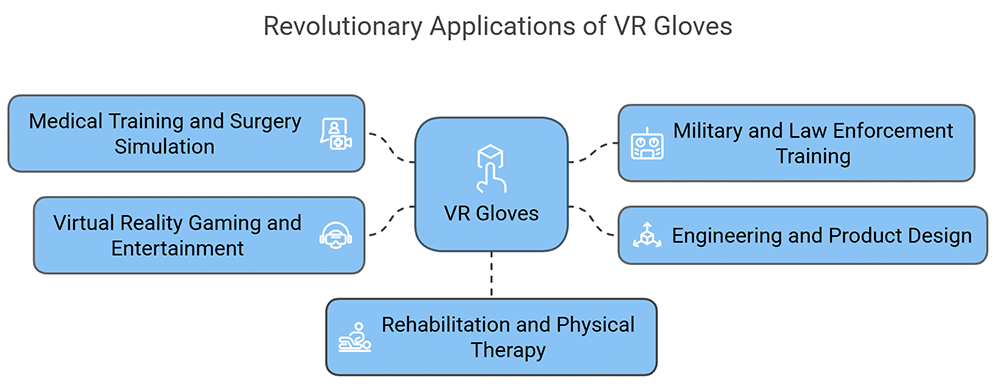
Future Innovations and Trends in Virtual Reality Glove Technology
The following features in virtual reality gloves are growing and improving at a rapid pace.
- Miniaturization and Comfort: Each generation of VR gloves has increased comfort and come closer to the form factor of standard gloves while retaining full VR functionality.
- Advanced Material Science: Slimmer virtual reality hand gloves are possible in part through the development of thin, smart fabrics such as MIT’s contribution, which boasts five times standard precision.
- Neural Interfaces: New experimental immersive VR gloves can measure muscle activation with EMG before you move, reducing latency by up to 27 milliseconds.
- Finger-level Force Feedback: Innovative new designs let virtual reality gloves work on specific finger movements with variable strengths, which can improve pressure scores by 43% on average.
• Standardization Efforts: Leading voices in the immersive tech industry are creating standardized APIs, like OpenXR, for VR gloves that will allow greater compatibility between VR platforms.
VR Headsets; Your Complete Guide to the Top Virtual Reality Gear
VR gloves are an amazing accessory, but you’ll still need the base hardware – a compatible VR headset. However, choosing a headset means carefully weighing options such as whether it’s tethered to a PC, operates independently, or provides options for both. You can browse the best VR headsets of today and also get a glimpse at what’s coming in the future in the article “VR Headsets; Your Complete Guide to the Top Virtual Reality Gear.”
Virtual Reality in Entertainment; Examples of VR in Entertainment
Part of the appeal of virtual reality gloves comes from their utility for creative works. VR already has a firm place within the entertainment sector, and additional tools to create and enjoy content can help everyone get the most out of it. VR is enriching concerts, bringing stories to life, and so much more. You can peek into the tools and creative process of some of the most creative minds in immersive entertainment in the article “Virtual Reality in Entertainment; Examples of VR in Entertainment.”
VR gloves are a leap forward in immersive technologies. You’ll not only see but be able to touch virtual worlds. And you now have everything you need to enjoy the cutting-edge experience of VR interactive gloves for yourself.
Did You Like This Article About VR Gloves?
You might also be interested in the following articles:
- Virtual Reality Industries; An Overview of All Sectors Using VR
- Expected Virtual Reality and Augmented Reality Headsets
- Best VR Games: Top Virtual Reality Gaming Experiences

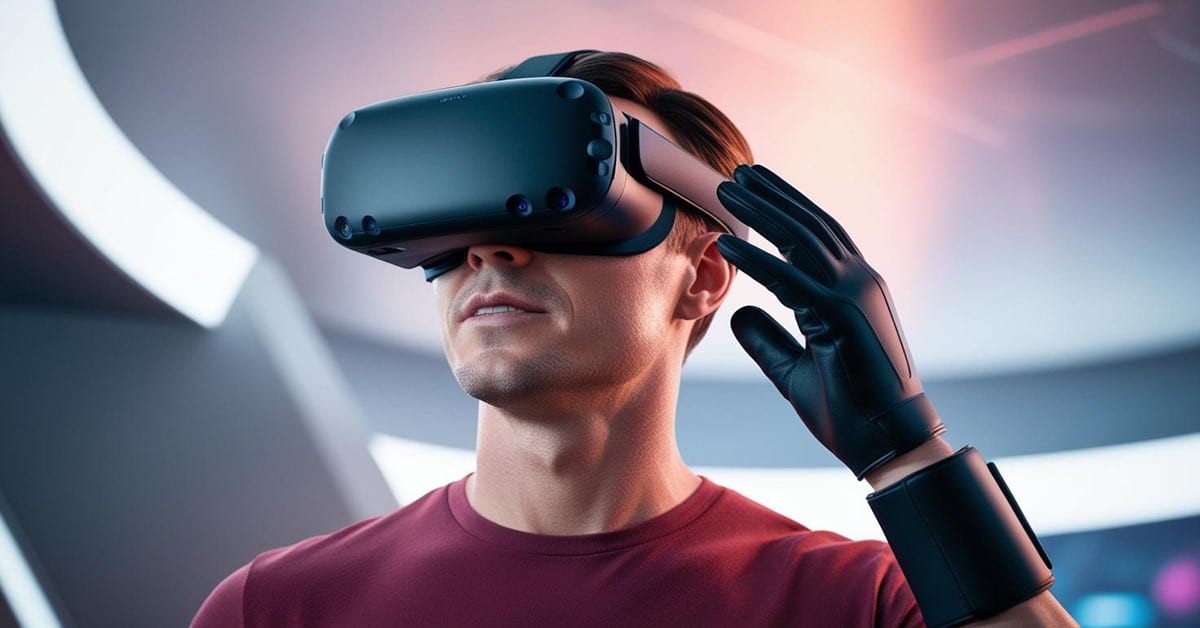







Leave A Comment